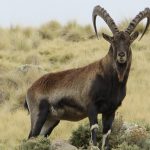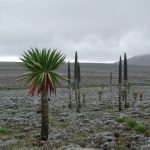Alatish National park
Alatish national Park was established in 2006 G.C.It is 2665 square kilometers wide & 970 kms north of Addis Ababa.
Park Location and Features
Alatish National Park is located between 11047’5.4” to 12031’3.6”N latitude and 35015’48” to 35048’51”E longitude in north western flat plain part of Ethiopia. The general topography of park is flat to undulating plain with general slop inclination from south to north interrupted by valleys, streams, scattered hills and seasonal wetland.
Flora
In general the vegetation of the park area is classified into five types. These are:-
- Mixed woodland vegetation where Combretum and Terminalia species are abundant
- Riverine vegetation which is dominated with Acacia, Ficus, Terminalia species and other herbs
- Seasonal wetlandvegetation which is dominated with different types of herbs such as Hygrophila auriculata with scattered trees such as Acacia and Terminlaia and Balalnite aegyptica trees
- Open wooded grassland vegetation which is characterized by scattered trees of mainly Annogiossus leocarpa and Combretum species and dense grass ground cover
- Hilly area wood landvegetation which are rich with diverse woody species types such as Ficus trees and lower canopy species like Oxythenanthera abyssinica
Based on the characteristics of Ethiopian vegetation classification, vegetation in Alatish National Park is categorized largely under woodland vegetation ecosystem. The overall park area is dominated by Combretum spp., Terminalia spp., Oxythenantera abyssinica, Anogeissus leocarpa, Pterocarpus lucens, Dalbergia melanoxylon, Balanites aegyptica, Acacia seyal, Dacrostachys cinera, Ficus spp, Entada Africana and other woody species.
The woodland vegetation type of Alatish National Park is mainly deciduous tree species. However, partly, the vegetation of the park is also characterized by open grasslands and thorny plant species that could be categorized in the Acacia-Commiphora ecosystem.
Fauna
Alatish National Park is rich in zoological resources and it is home to various types of wild animals. 37 mammalian species of which 8 are not recently (last 15 years) seen, 204 birds species, 23 rodent species, 6 species of insectivores and 7 types of reptiles and amphibians are found in the park.
Alatish National Park has a variety of fauna which require conservation. It is specially rich in reptile diversity such as African rock python, monitor lizard, Egyptian cobra, black mamba and blandings tree snake. It also harbours endangered and rare species like Elephant (Loxodonata Africana), Leopard (Panthera pardus), Lion (Panthera leo) and also low risk but conservation dependent Lesser kudu (Tragelaphus imberbis) and Greater kudu (Tragelaphus strepsicero). Permanent but intermittent rivers bordering the park like Aayima and Gelegu provide huge amount of fish resources to the local communities besides being the main water sources of people and animals.
Key species:
Elephant, Lesser kudu & Greater Kudu
Lesser kudu
The Lesser Kudu (Tragelaphus imberbis) is a forest antelope found in East Africa and (possibly) the southern Arabian Peninsula. The Southern Lesser Kudu (Tragelaphus imberbis australis) is a subspecies found in Kenya and Tanzania.
Lesser Kudu stand about a metre at the shoulder and weigh 155 to 205 kilograms, males are larger than females. Lesser Kudu males are grey-brown while females are chestnut the coat is lighter on their underside. Both have about ten white stripes on their backs and two white tufts on the underside of their necks. Males have a small mane and horns of about 70 centimetres with one twist.
Lesser Kudu live in dry thorn bush and forest and eat mainly leaves. Lesser Kudu are nocturnal and matinine crepuscular. They live in groups of two to five ranging up to twenty-four on rare occasions these have about equal numbers of males and females.
Tourist Attractions
In terms of tourism potential, the park has a capacity to tourism development with the numerous tourist attractions. As a natural attraction Alatish National Park has various plants, and animals such as mammals, birds, reptiles, amphibians and fish. In its spectacular landscape, the park is more or less flat train with very few scattered beautiful conical peaks. The landscape is dominated by dry woodland savanna and the riverine forest can also be potential tourist attractions.
As a historical attraction, one big Baobab tree (Adansonia digitata) housed the former Emperor Haileselassie for seven days inside its stem on his return to Ethiopia after victory over the colonialist Fascist Italia in 1941. Moreover, Emperor Tewodros, which was one of the most magnificent Ethiopian leaders, was born in Quara about 25 km from Gelegu, headquarters of Alatish National Park in 1818.
Alatish National Park has also cultural attractions which can be expressed in music, dance and drams performing groups, cultural festivals, sale of visual arts and crafts (basketry & pottery) and life styles practiced by many diverse ethnic groups (Gumuz, Agew, Amhara) living around the park.
Source: EWCA







Leave a Reply